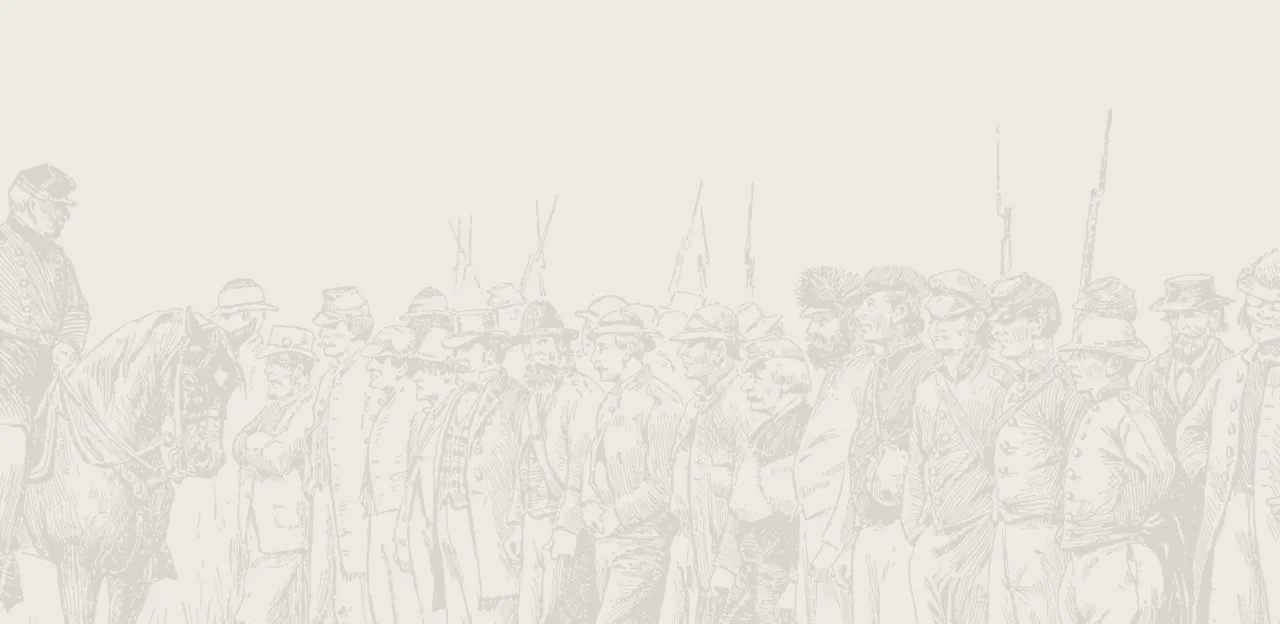Brandy Station

The Battle of Brandy Station
Fleetwood Hill
Following the Confederate victory at the Battle of Chancellorsville in May of 1863, the two great eastern armies found themselves once more confronting each other along the line of Virginia’s Rappahannock River. Never one to forfeit the initiative, Confederate Gen. Robert E. Lee resolved to take the war once again onto Northern soil.
Beginning June 3, the Army of Northern Virginia marched west from Fredericksburg towards Culpeper Court House, on its way to the protection of the Shenandoah Valley. Lee ordered Gen. J.E.B. Stuart’s cavalry to screen this movement, keeping the southern bank of the Rappahannock free of Union scouts. By June 8, roughly 9,500 of Stuart’s cavalrymen were concentrated at Brandy Station, a small crossroads roughly halfway between Culpeper and the Rappahannock. In preparation for his pivot northward, Lee directed Stuart to launch a diversionary raid across the river the next day, June 9.
Gen. Joseph Hooker, commanding the Union Army of the Potomac, correctly interpreted Stuart’s intentions. Redeploying his own cavalry opposite Brandy Station, he too ordered an attack for June 9. After the perceived failure of the mounted wing during the Chancellorsville Campaign, Hooker’s orders were plain: "disperse or destroy" Stuart’s entire command. Cavalry commander Gen. Alfred Pleasanton accordingly augmented his striking force with an ad hoc infantry brigade, bringing his strength to nearly 12,000 men. Stuart remained unaware of this rapid build-up of strength to his front. Pleasanton’s plan had called for a coordinated double attack by Gen. John Buford’s troopers at Beverly’s Ford and a force under Gen. David Gregg further south at Kelly’s Ford.
At 4:30 A.M., Buford’s men splashed across Beverly’s Ford, four and a half miles northeast of Brandy Station, and quickly scattered surprised Confederate pickets. Firing their revolvers wildly, the pickets scrambled back towards the main camp near St. James Church, along the direct road to Brandy Station from Beverly’s Ford. Bleary-eyed Confederates at St. James Church hurled themselves into the fray and managed to stall Buford’s advance, claiming the life of Buford’s lead subordinate, Col. Benjamin "Grimes" Davis.
Stuart's horsemen suffered heavily, but bought enough time for their artillery to deploy and open a murderous fire on the congested Union column from the high ground around the church. His position in peril, Buford ordered a desperate charge on the Confederate battery. The 6th Pennsylvania led the assault with the 6th U.S. close behind. Undeterred by the canister and shrapnel scything through their ranks, the Union horsemen overran the guns before Brig. Gen. "Grumble" Jones's Confederates repulsed them.
With the guns back in action, Buford now sought to reach them by moving around the Confederate left flank on Yew Ridge. Dismounted Confederate troopers repulsed repeated attacks from behind a stone wall before being dislodged at around noon.
Meanwhile, delays were plaguing Gen. David Gregg’s Federal horsemen at Kelly’s Ford. Gregg’s scouted alerted him of the presence of Confederates in his front, prompting the Pennsylvanian to make a wide march around the enemy. It was 11:30 A.M. before Gregg reached Brandy Station, but he was now firmly in the Confederate rear.
Gregg’s path to St. James Church was blocked by Fleetwood Hill, a broad elevation where J.E.B. Stuart had established his headquarters. Union artillery opened on Fleetwood Hill, giving a considerable shock to Stuart, whose main force was entirely committed to the battle in his front. Gregg’s preparatory barrage, however, gave Stuart time to pull troops back to Fleetwood Hill to meet the first Union charge. Meanwhile, Confederates withdrawing from Yew Ridge were still holding Buford’s tired troopers at bay, allowing Stuart to shuffle more troops to face Gregg. The opposing lines crashed into one another again and again for almost five hours. Finally, hearing reports of incoming Confederate reinforcements, Pleasanton decided to withdraw at 5 P.M. Stuart did not pursue.
Although Pleasanton failed to destroy Stuart’s command, the hard fighting at Brandy Station definitively proved the fighting prowess of the much-maligned Northern horsemen—in the words of Stuart's own aide, "Brandy Station made the Federal cavalry." Stuart, for his part, was denounced in the Southern press for allowing himself to be surprised and very nearly destroyed on his own soil. Nevertheless, the Confederate infantry remained undetected, and continued the march that would eventually reach Gettysburg, Pennsylvania.





